November 24, 2024 | 04:00 GMT +7
November 24, 2024 | 04:00 GMT +7
Hotline: 0913.378.918
November 24, 2024 | 04:00 GMT +7
Hotline: 0913.378.918
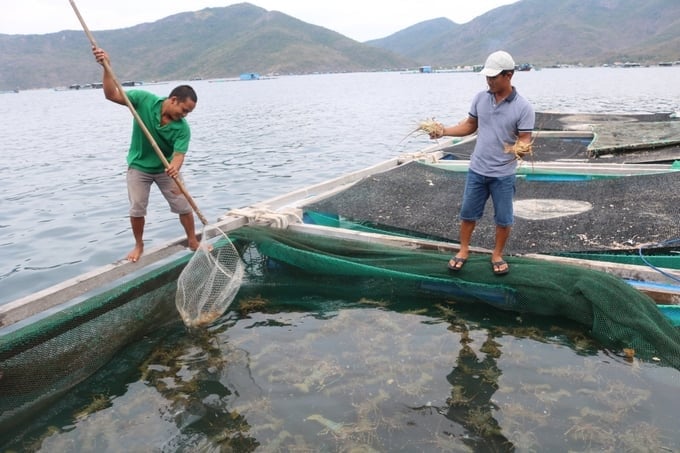
Rock lobster farmers in Van Phong Bay, Van Ninh district, are currently dedicated to nurturing their lobster crop. Photo: Kim So.
Green lobsters in Cam Ranh Bay, Khanh Hoa province are being procured by traders at a stable price of at least 1 million VND per kilogram (for the 3 pieces per kilogram variety), an event that has brought considerable relief to the local community.
However, the situation is markedly different in the rock lobster farming areas of Van Phong Bay, Van Ninh district. Namely, traders have discontinued their purchases of lobster for the last several months, leaving the farmers in distress. A survey conducted by the Vietnam Agriculture Newspaper indicates that there is currently an inventory of at least several hundred tons of marketable lobsters in terms of weight. In addition, the farmers are forced to retain them in cages and wait for the return of traders.
Van Phong Aquaculture and Tourism Cooperative, situated in Van Gia town, currently has a 70-ton inventory of lobsters, with the average weight ranging from 0.7 to 1 kilogram per lobster. Members of the cooperative have been anxiously anticipating prospective buyers who can alleviate the inventory, thereby providing financial resources for the continuation of their aquaculture activities and reinvestment.
According to Mr. Nguyen Thanh Sang, Chairman of the Board of Directors at the Van Phong Aquaculture and Tourism Cooperative, the discontinuation of lobster procurement by traders has last for approximately three months. Local lobster farmers have expressed concern regarding the escalating operational expenses and the considerable financial losses in association with an inability to vend their lobster harvest. Consequently, farmers are forced to focus on the nurturing of their lobster stocks and wait for support from relevant local governments regarding a viable remedy for their consumption issue.
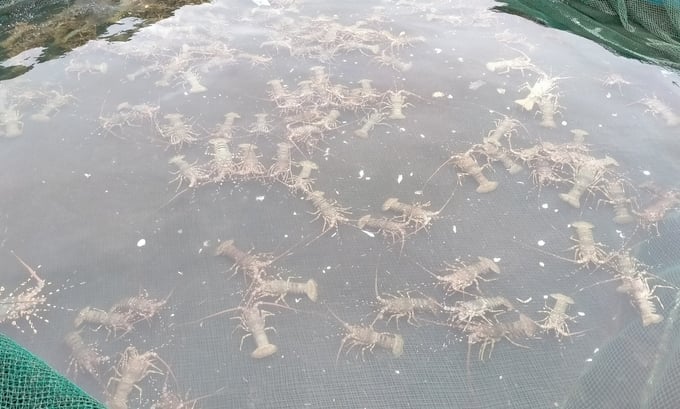
The Van Phong Aquaculture and Tourism Cooperative is currently raising 70 tons of harvestable rock lobsters. Photo: KS.
The Van Phong Aquaculture and Tourism Cooperative currently has 32 members with nearly 4,000 rock lobster cages. In addition to the marketable volume of lobsters, the cooperative plans to harvest at least 200 tons of lobster meat by the start of the Lunar New Year.
According to lobster farmers in the Van Phong Bay area, three months prior, Grade 2 lobsters were being purchased at prices ranging from 1.6 to 1.7 million VND per kilogram and Grade 1 lobsters at prices ranging from 1.9 to 2.1 million VND per kilogram. During that time, numerous vessels travelled to the fishing grounds on a daily basis for lobster procurement, which is primarily exported to the Chinese market. Subsequently, lobster traders abruptly ceased their purchases, leaving lobster farmers in distress.
Traders attribute the cessation in rock lobster procurement to the Chinese market's reluctance to import this lobster variety. As a result, only a small number of vessels are engaged in lobster procurement in Van Phong Bay on a daily basis.
On the other hand, Mr. Nguyen Xuan Hoa, a lobster farmer residing in Vang Gia Town, reports an abundant supply of lobster meat within the local area. He currently has a 4-ton inventory of lobsters within his own household. After their failure to secure buyers and commence sales, daily expenses continue to accumulate as they diligently cater to the lobsters' dietary needs, resulting in substantial costs.
"Our lobsters have attained a minimum weight of 0.8 kilograms per individual. Feeding these lobsters entails an approximate daily expenditure ranging from 12 to 15 million VND. Considering the substantial number of enclosures under our ownership, which amounts to a total of 80, our investment capital is quite considerable," Mr. Hoa lamented.

Rock lobsters are renowned for their high economic value. Photo: KS.
Similarly, the caged lobster farming cooperative in Khai Luong hamlet, Van Thanh commune, Van Ninh district, also houses a considerable inventory of unsold lobster meat.
According to Mr. Tran Minh Hien, head of the lobster farming cooperative in Khai Luong hamlet, these lobsters were raised between August and September in 2022, and have reached a weight of 0.6 to 0.7 kilogram per individual. Despite many attempts by local residents to seek lobster traders in response to their difficulties, the majority of the responses were negative. As a result, farmers are currently refraining from selling in hope that the lobster market will recover in the near future.
There are currently over 35,000 lobster cages in Van Phong Bay, which are mainly used for raising rock lobsters. As the region is entering the stormy season and the lobsters are ready for harvest, the farmers are concerned due to the lack of traders.
Mr. Le Van Hoan, Deputy Director of Khanh Hoa province's Department of Agriculture and Rural Development, the province currently has approximately 200 tons of rock lobsters ready for harvest, with sizes ranging from 0.7 kilogram per individual and up. Most notably, 70 tons of these unsold lobsters belong to Grade 1. In addition, the majority of these lobsters are concentrated in Van Ninh district.
According to Mr. Hoan, rock lobsters are renowned for their high economic value and primarily destined for export to the Chinese market through unofficial channels. China is currently restricting the importation of agricultural, forestry, and aquatic products through unofficial channels, including rock lobsters.
Furthermore, China's restrictions on the import of rock lobsters require businesses to certify their product's traceability. As a result, farmers are advised to comply with origin traceability regulations in order to ensure that their products meet the necessary conditions for official export to the Chinese market.

The rock lobster farming area in Van Phong Bay is currently devoid of traders. Photo: KS.
With the aim of establishing a long-term and stable market for rock lobster without relying on a single market, both businesses and farmers need to carry out lobster farming according to the plan, register and fully declare to the regulatory agencies. Additionally, they should implement safe biological practices and maintain transparent origin traceability.
Khanh Hoa province is currently developing a model for rock lobster farming and marketing, which is part of the project titled "Establishing a link in the production and marketing of rock lobster." This project is led by the Vietnam Institute of Fisheries Economics and Planning under the Ministry of Agriculture and Rural Development.
Most notably, the institute has recently signed cooperation agreements with various participants in the model. When the model is fully implemented in the near future, it is expected to facilitate the marketing and exporting of rock lobsters within the province.
Mr. Nguyen Tri Phuong, Deputy Director of Phu Yen province's Department of Agriculture and Rural Development, reportedthat the province has nearly 100,000 lobster cages. However, the majority of local farmers have shifted their focus to green lobster farming, whereas rock lobster has been limited, accounting for only 10% of the total production. The province expects to harvest approximately 600 tons of lobster by the start of the Lunar New Year, including 60 tons of rock lobsters.
Given the current rock lobster procurement, the Department of Agriculture and Rural Development advises farmers to focus on nurturing and protecting their assets during the rainy season, especially for small-size lobsters. Moreover, farmers are recommended to continue searching for potential markets. The local governments and regulatory agencies will make recommendations to the central government and the Ministry of Agriculture and Rural Development for interventions and support measures to facilitate the resumption of rock lobster exports.
Translated by Nguyen Hai Long
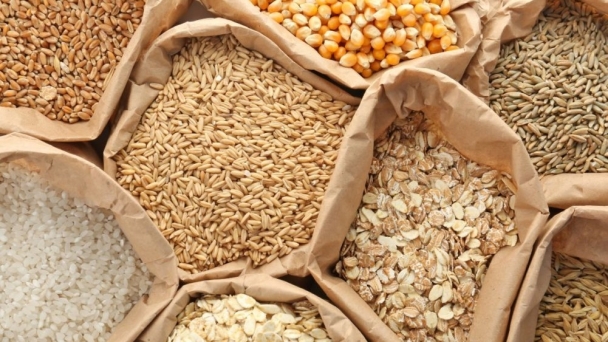
(VAN) In its monthly grain market report, released on Nov. 21, the IGC revised total grains ending stocks lower by 8 million tonnes, to 576 million, a 3.5% decrease from the previous year.
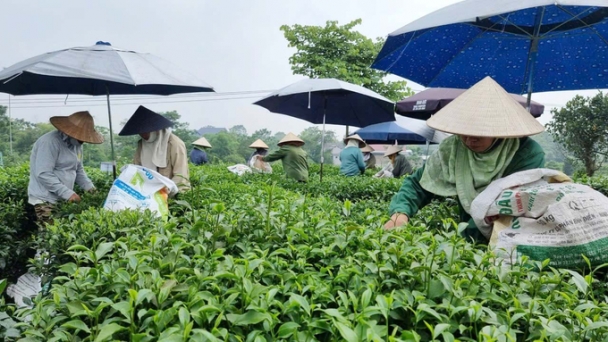
(VAN) Vietnam's tea industry, one of the top five tea-exporting countries in the world, is facing a concerning reality as the average export price of Vietnamese tea is only 67% of the global tea price.
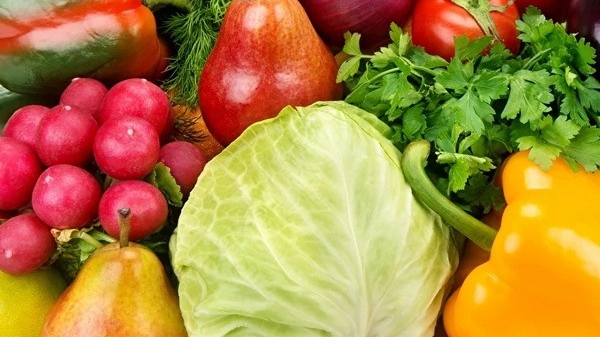
(VAN) Analysts at EastFruit have observed that fruits and vegetables are contributing to inflation in Russia, despite the government's efforts to combat it through fiscal policies and an increase in the key interest rate to 21%.
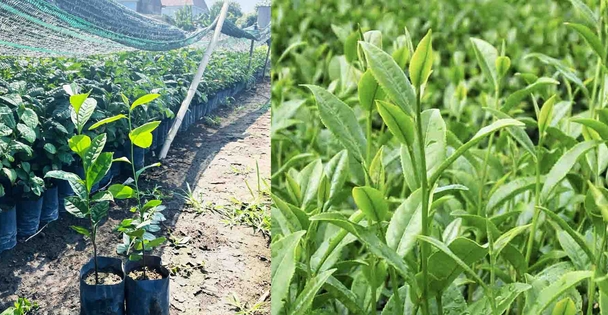
(VAN) Expanding high-quality tea varieties has become a strategic goal for Vietnam's tea industry to increase export value and escape the 'cheap price trap' when exporting tea to global markets.
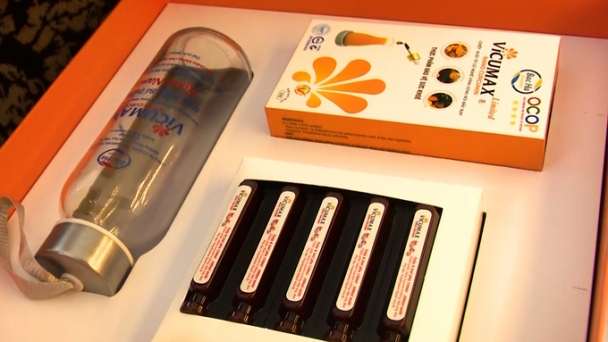
(VAN) After implementing the OCOP program, several products from Bac Kan Province have established a strong presence in the market and are moving towards export.
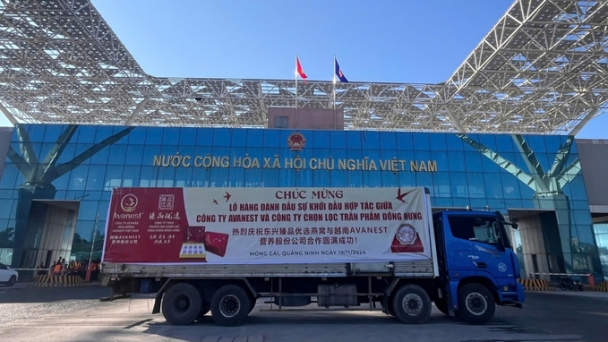
(VAN) On November 20, a Vietnamese company exported nearly 10 tons of bird's nest to China's market through the Bac Luan II border gate in Quang Ninh.

(VAN) Many businesses believe that Halal market is huge and has a lot of potential; even in Vietnam, there are Muslims, and improving product quality is important.